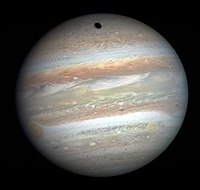
Photo from wikipedia
InGaN-based nanowires (NWs) have been investigated as efficient photoelectrochemical (PEC) water splitting devices. In this work, the InGaN/GaN NWs were grown by molecular beam epitaxy (MBE) having InGaN segments on… Click to show full abstract
InGaN-based nanowires (NWs) have been investigated as efficient photoelectrochemical (PEC) water splitting devices. In this work, the InGaN/GaN NWs were grown by molecular beam epitaxy (MBE) having InGaN segments on top of GaN seeds. Three axial heterojunction structures were constructed with different doping types and levels, namely n-InGaN/n-GaN NWs, undoped (u)-InGaN/p-GaN NWs, and p-InGaN/p-GaN NWs. With the carrier concentrations estimated by Mott-Schottky measurements, a PC1D simulation further confirmed the band structures of the three heterojunctions. The u-InGaN/p-GaN and p-InGaN/p-GaN NWs exhibited optimized stability in pH 0 electrolytes for over 10 h with a photocurrent density of about -4.0 and -9.4 mA/cm2, respectively. However, the hydrogen and oxygen evolution rates of the Pt-treated u-InGaN/p-GaN NWs exhibited a less favorable stoichiometric ratio. On the other hand, the Pt-decorated p-InGaN/p-GaN NWs showed the best PEC performance, generating approximately 1000 µmol/cm2 hydrogen and 550 µmol/cm2 oxygen in 10 h. The band-engineered p-InGaN/p-GaN axial NWs-heterojunction demonstrated a great potential for highly efficient and durable photocathodes.
Journal Title: Optics express
Year Published: 2019
Link to full text (if available)
Share on Social Media: Sign Up to like & get
recommendations!